For about three years now one of my photography goals has been to get a series of quality shots showing a Loggerhead Shrike regurgitating a pellet. My requirements were that the images must be sharp with good detail and light, there must be no significant distractions or clutter to interfere with the behavior, there should be light in the eye (a catch light) and the last shot must show the pellet after it has left the birds mouth.
This post is a progress report of sorts on how I’ve fared with the goal. I’ll include some lessons I’ve learned and mistakes I’ve made so I hope you’ll bear with me through a few less than ideal images which help to illustrate some of those lessons.
1/1250, f/8, ISO 640, 500 f/4, 1.4 tc
This was my first image of a shrike ejecting a pellet (3/3/10). I didn’t anticipate it happening and wasn’t even sure what was going on until I processed the image. I got two almost identical shots that showed the pellet in the mouth and missed the pellet as it was ejected (I think I remember my buffer filling up just about then). I was also too far away for good image quality – this is a large crop.
1/3200, f/6.3, ISO 500, 500 f/4, 1.4 tc
On the next opportunity (8/5/11) I was frustrated by obstructing branches and a poor light angle. While this young bird was ejecting the pellet it was facing mostly toward me which put its face and the pellet in shadow. Then the juvenile did something completely unexpected – instead of ejecting the pellet downwards it caught the pellet in its beak and began playing with it, then turned sideways to give me some better light on the action (though I never did get light in the eye).
1/3200, f/6.3, ISO 500, 500 f/4, 1.4 tc
And then it proceeded to completely mash-up the pellet in its beak and let the debris fall to the ground. It didn’t swallow any of it as far as I could tell so my suspicion is that this unusual behavior was just an example of a young and inexperienced bird experimenting with its environment, like many young vertebrates do.
Obviously at this point I’m still a long ways from my goal of getting a series of quality images of pellet ejection behavior.
1/640, f/5.6, ISO 800, 500 f/4, 1.4 tc
On 11/25/11 I was stymied by atrocious lighting which gave me a high-key background and little light on the bird. It is a pretty good angle to see the pellet in the back of the throat though.
1/640, f/5.6, ISO 800, 500 f/4, 1.4 tc
And 1/640 shutter speed just isn’t enough to get the pellet sharp as it’s ejected.
Yes, I’m becoming a bit frustrated and discouraged at the prospects of ever meeting my goal.
1/1000, f/9, ISO 500, 500 f/4, 1.4 tc
My next opportunity (12/23/11) gave me some encouragement if not the completion of my goal. I was close enough to the bird for nice detail and the light was good even though I had distracting out of focus branches in the background. And I learned another lesson in this encounter – when the pellet was ejected I missed it because I had framed the bird so tightly at bottom.
Through these many months of frustrations I learned a few things.
a). time your shots so your buffer doesn’t fill up. These birds often go through several bouts of “gagging” to get the pellet out. It’s very easy to fill the buffer on gagging shots and miss the pellet coming out.
b). with a prime telephoto it’s very possible to be too close – leave some room at the bottom of the frame to give yourself a better chance at catching the pellet as it drops. There’s more than gravity involved here – the pellet is forcefully ejected, travels very fast and is easy to miss. If you’re shooting with a zoom lens, zoom back. In my case I can take off the tc.
c). finding a bird about to eject a pellet isn’t an everyday occurrence and you have to be prepared with enough shutter speed to catch the action so watch the behavior carefully. If they begin to open their mouths repeatedly (so it’s not a yawn) then get ready with the appropriate settings!
d). shrikes are often difficult to approach but if you’re surprised that one is letting you get unusually close be ready for this type of shot. In my experience they’re much more reluctant to fly if they’re about to hack up a pellet and that “stickiness” can be predictive of this type of behavior.
e). BNA Online (from Cornell Labs) says this about Loggerhead Shrikes – “Pellet formation, from the time prey is ingested until the compacted pellet is egested, averages 35.5 min”. Many bird photographers are not aware that shrikes eject pellets in the first place and this timing (35 minutes after prey is eaten) suggests to me that ejection typically occurs often during the day – something bird photographers interested in bird behaviors might want to be cognizant of.
1/1600, f/7.1, ISO 400, 500 f/4, 1.4 tc
Finally on 2/2/12 most everything came together for me. This adult was sitting on an unobstructed branch in good light and with a clean background. It let me approach closely so I immediately anticipated the possibility of a pellet ejection and adjusted my settings to give me the shutter speed and depth of field I thought I might need. It went through several gagging sessions trying to get the pellet out but each time I was judicious with my bursts to try to save my buffer for the ejection. In this first image you can just barely see the front end of the pellet.
1/1600, f/7.1, ISO 400, 500 f/4, 1.4 tc
The pellet about half way out and into the light.
1/1600, f/7.1, ISO 400, 500 f/4, 1.4 tc
The pellet being forcefully ejected almost straight down.
Do I think I met my goals? Well, mostly. There’s not much light in the eye on the last shot but there is some and I think it’s enough to make the image work. I do wish the pellet were slightly sharper but I think that’s a depth of field issue rather than insufficient shutter speed. I also wish I had a bit more room on the right for the tip of the tail. I’m pleased with the light and detail and the setting is clean and unobstructed to show the behavior well.
Generally I’m pleased with this series of three images but there’s always room for improvement and you can bet that I’ll be looking to do just that at my next chance with one of these shrikes.
I went digging around at the base of the tree after the bird flew off to see if I could find the pellet but wasn’t able to locate it. The ex-biology teacher in me I guess…
Ron


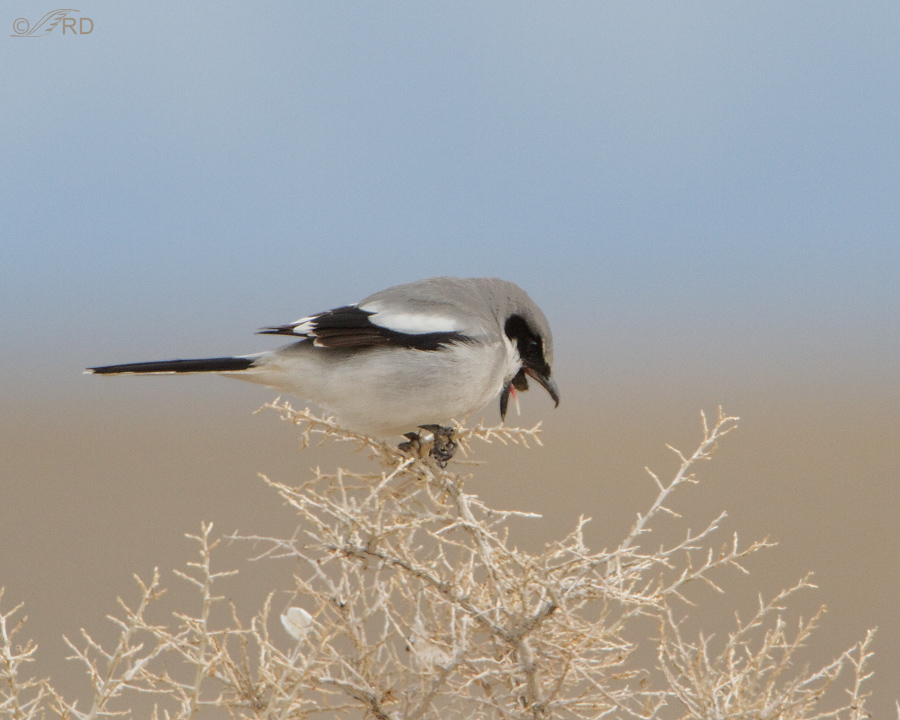
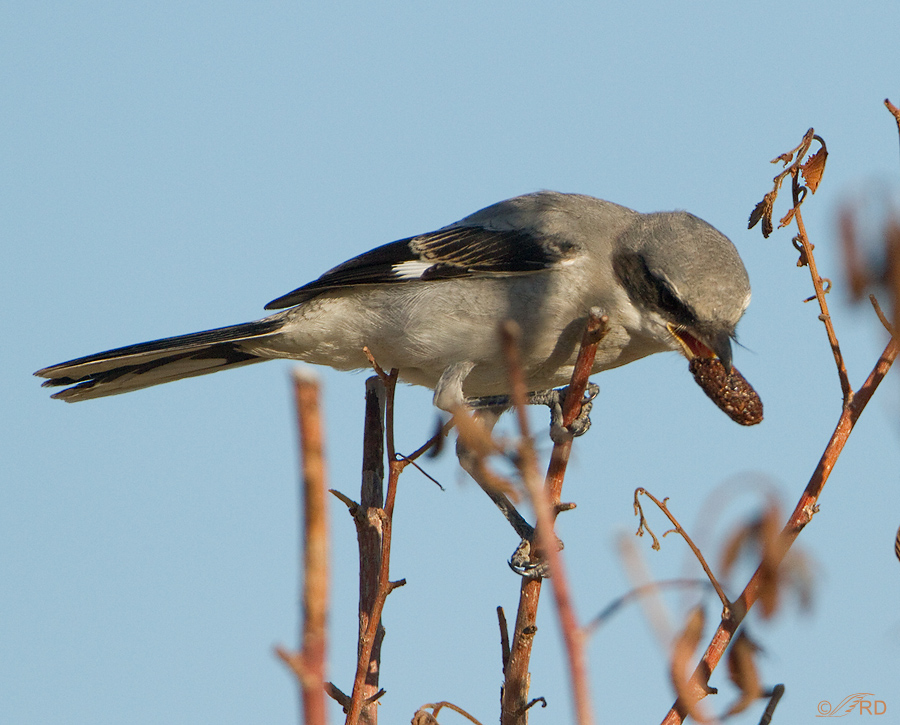
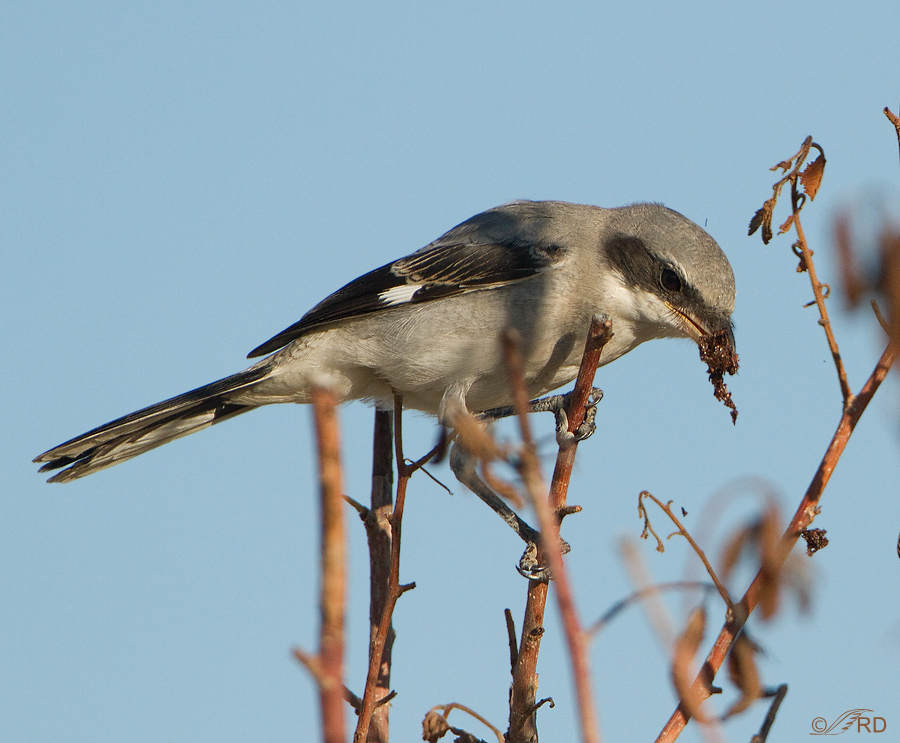

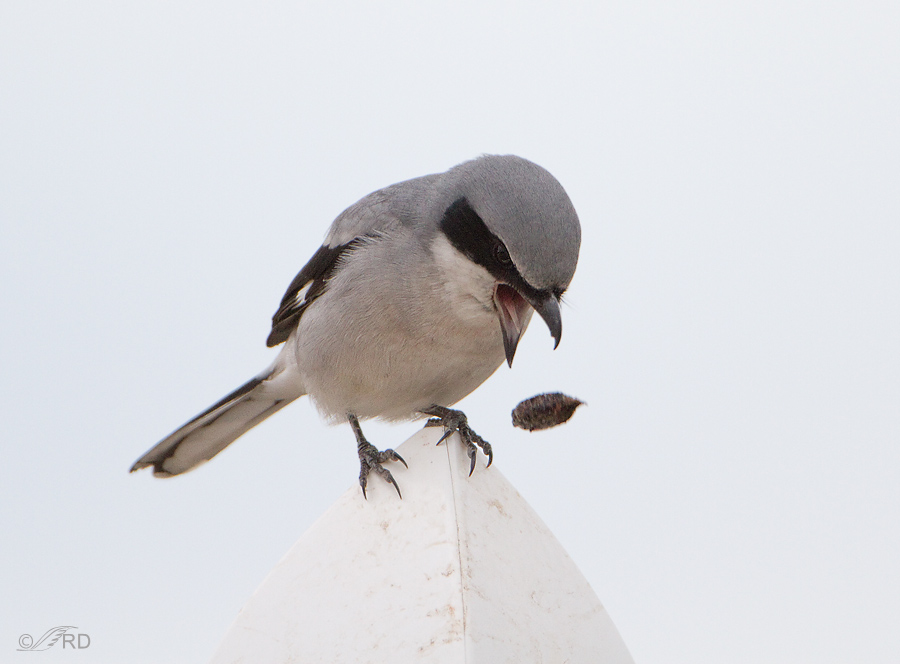
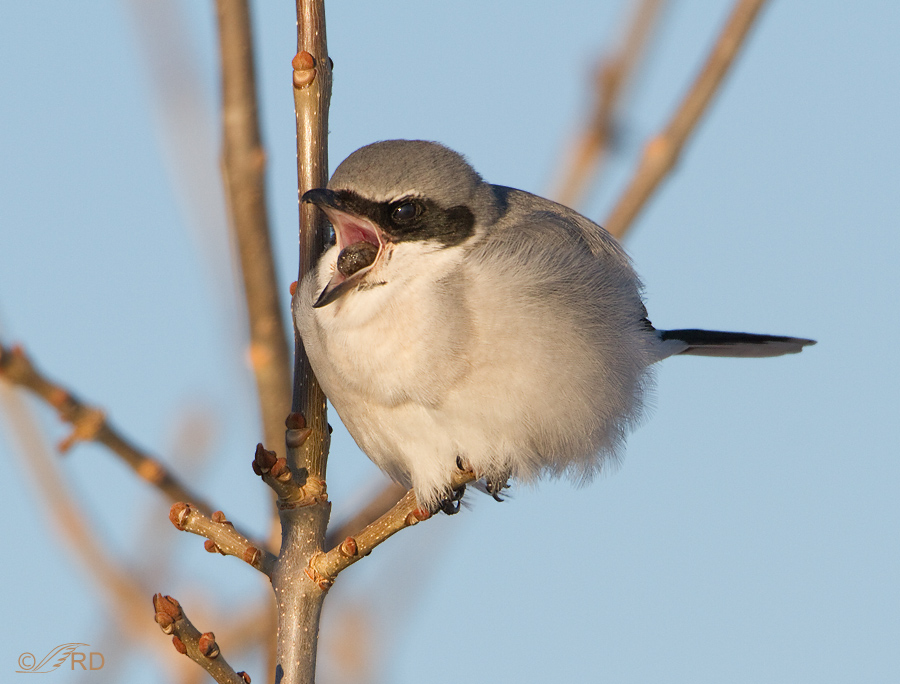
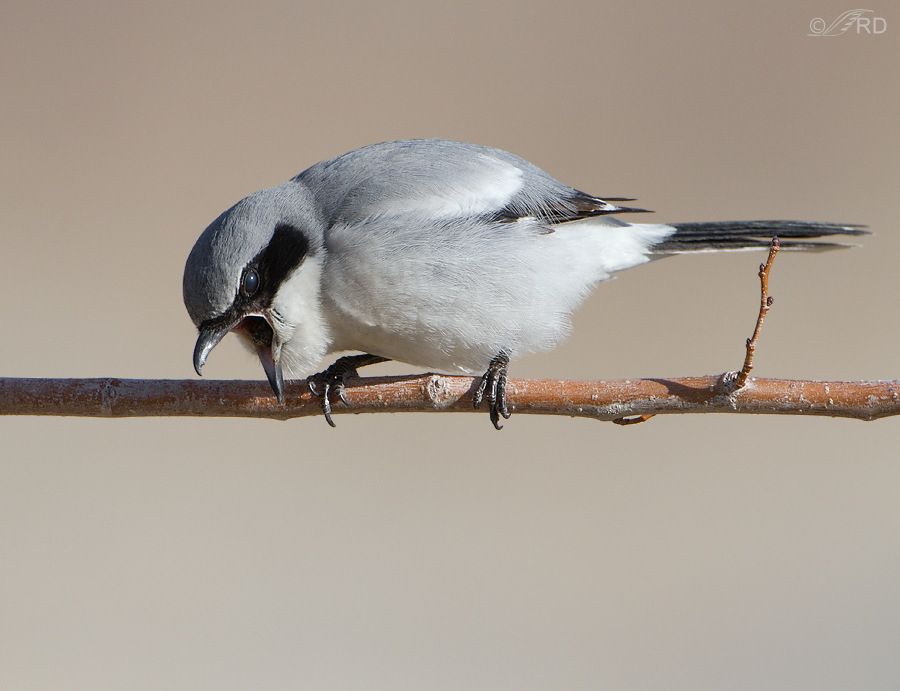
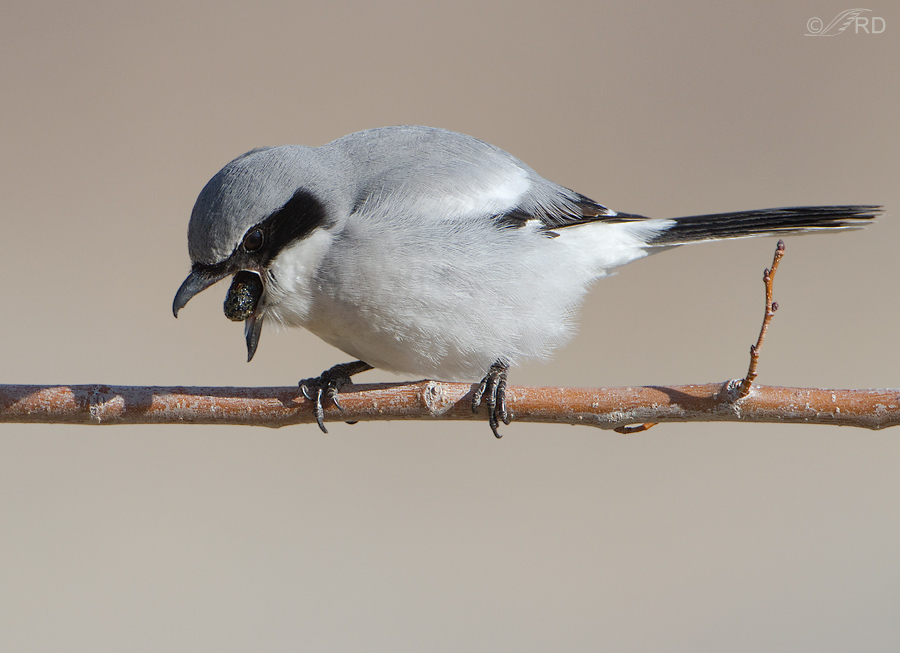

Ron-you’ve certainly met your objective as I can see. The last series of three captures the behavior you were interested in documenting along with the photographic excellence you demand of yourself-the techs are superb. I think you’re a tad hard on yourself in your critique, especially the spacing issue on the last image-IMO this is top quality work. Great photo essay!
Wow, a fun post and some great exciting images. I knew nothing about the Shrikes expelling pellets. I certainly will be taking closer looks at the Loggerhead Shrikes down here.
Thank you. I love learning about the birds you are able to see. The last three were astonishing images. I had thought it was only the larger birds like owls that were pellet expellers.
I had no idea! Wow!
Ron,
Awesome article and great images.
Best,
Vinnie